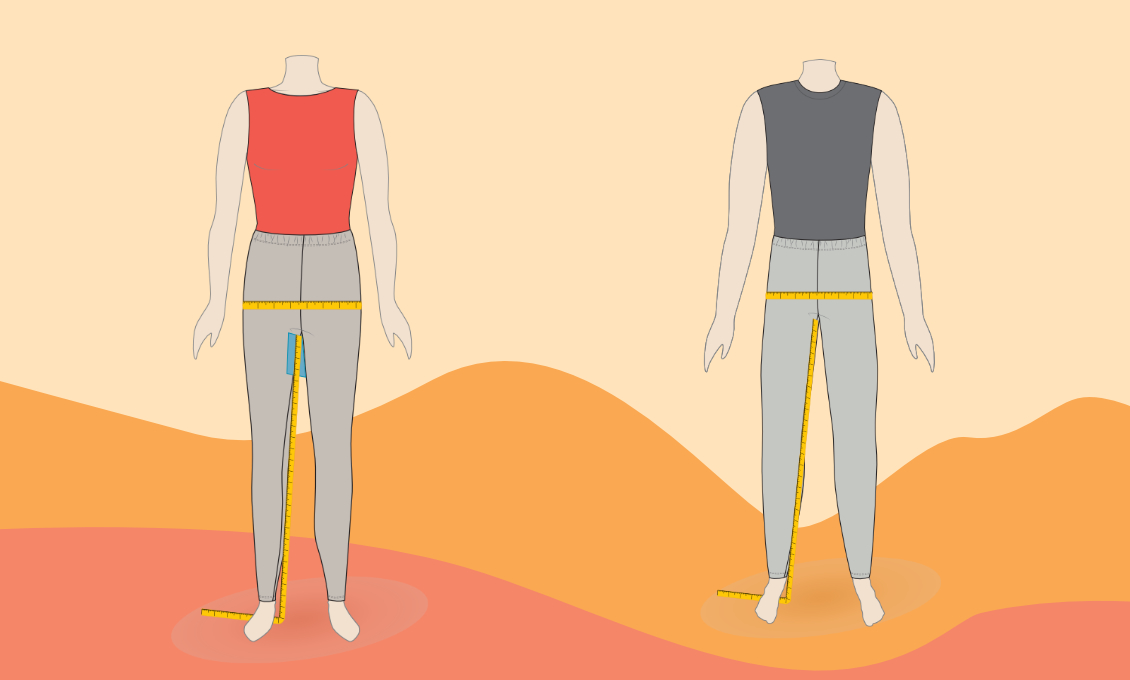The final length of your trousers can easily be adjusted by shortening or lengthening the pattern, sometimes by 2 cm (0.8") or even 3 cm (1.2").
Take exact measurements of your body. You don’t have to add an extra cm or inch to your measurements for comfort or length. This is already taken into account with all patterns.
However, it is important that you measure your inside-leg length so that the fit of your waist height and knee height can be optimized. Also, provide us with your hip and thigh circumference, so we can choose the right pattern group for you.
The waist and side length will add the final touch to your custom pattern.
For more detailed information, see the step-by-step guidelines.
